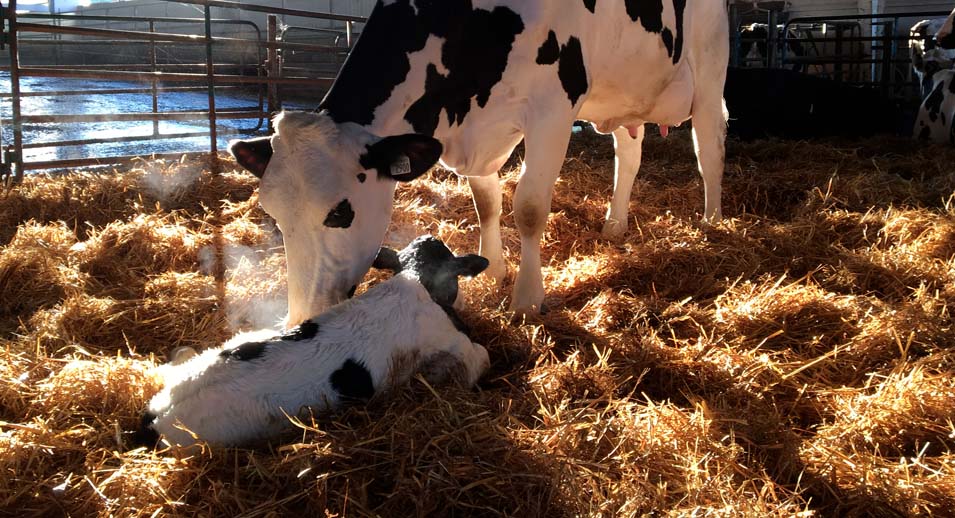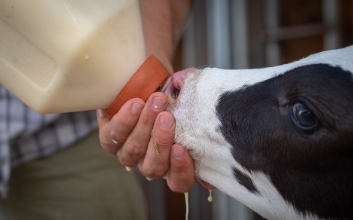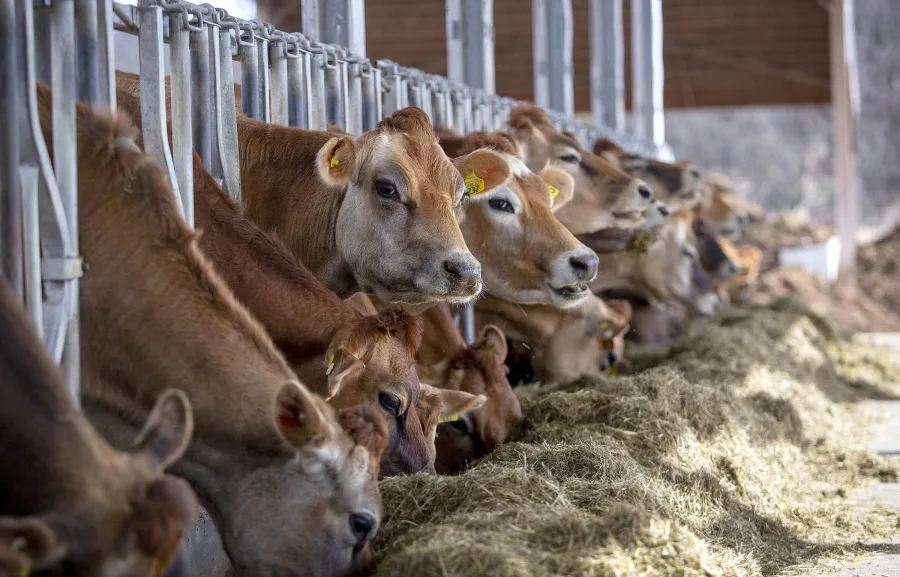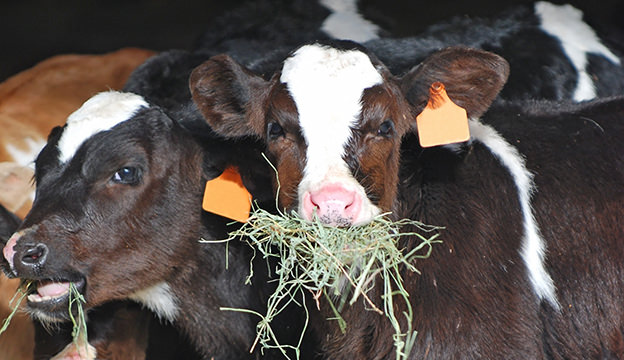Find out how the right hoof trimming can increase milk production and boost cow health. Are you trimming at the best time? Uncover the secrets to a more productive dairy farm.
Summary: Are you overlooking the secret ingredient to maximizing your dairy farm’s productivity? Hoof trimming might just be the game-changer you need. Recent studies by Save Cows Network and Cornell University reveal groundbreaking insights on how the timing of hoof trimming can dramatically affect both milk production and cow behavior. Leveraging data from modern tech tools like sensors and herd management systems, these findings offer actionable solutions to optimize your livestock management. Trimming cows too early in lactation may adversely affect milk yield, suggesting the need to carefully consider the timing of trimming interventions. Whether you’re dealing with lameness or simply looking to enhance milk yield, understanding the nuanced impact of hoof health can significantly boost your farm’s overall productivity. Ready to delve deeper into these findings? Keep reading to discover how precise hoof care can revolutionize your dairy farming practices.
- Recent studies highlight the significant impact of hoof trimming on milk production and cow behavior.
- Timing is crucial; trimming cows too early in lactation can negatively affect milk yield.
- Modern technologies like sensors and herd management systems provide valuable data for optimizing hoof trimming schedules.
- Research from Save Cows Network and Cornell University offers actionable insights for dairy farmers.
- Better hoof care practices can enhance overall farm productivity and animal welfare.
- Understanding the timing and impact of hoof trimming can lead to more informed livestock management decisions.

Have you ever considered the benefits of a simple hoof trim on your milk production? It may seem surprising, but the timing of hoof clipping can significantly impact your dairy cows’ health and output. Understanding this link is crucial for any dairy farmer aiming to enhance herd health and milk output. From determining the best time for hoof trims to studying how these operations influence your cows’ daily behaviors, we provide all the information you need to make an informed decision. Let’s explore how contemporary technologies and data integration can help you refine your herd management strategies and boost your milk production.
Why Hoof Trimming Matters More Than You Think
Let’s delve into the importance of foot trimming. We all understand the necessity of keeping our cows’ hooves in top condition. But have you ever stopped to think why it’s so crucial? What if I told you the answer could significantly impact your dairy farm’s productivity?
First, frequent hoof trimming may help avoid lameness. Lameness may be a severe problem in dairy herds, causing discomfort, reducing milk output, and decreasing overall well-being. By cutting our cows’ hooves regularly, we can ensure our cows’ comfort and freedom of movement, which directly influences their production and overall well-being.
However, as contemporary dairy farming progresses, we receive fresh insights from enhanced data collecting. Sensor data, herd management systems, and specialist software are shedding light on these issues, allowing us to make more educated judgments. So, although the argument continues, we’re coming closer to determining the ideal pruning timetable that combines cow health and milk output. This ideal timetable, once established, could significantly improve our herd management strategies, leading to higher milk production and better cow welfare.
Technology: The Game Changer for Modern Dairy Farms
In today’s quickly evolving dairy sector, technology is more than a luxury; it is a game changer. Have you ever wondered how contemporary dairy farms maintain track of many variables while striving for maximum efficiency? That is when the power of data integration comes into play. This technology is altering how we manage our herds and empowering us to make informed decisions and take control of our operations.
Have you seen the high-tech sensors on cows? They are not just for show. These devices track everything from activity levels to rumination times. When combined with modern herd management systems, they become potent tools—systems like DairyComp 305 provide real-time information on herd health and productivity.
But there is more. AccuTrim, a hoof-trimming program, adds another level of accuracy. By integrating data from sensors, herd management systems, and trimming schedules, farmers can determine the optimal times to clip hooves. This integration not only aims to avoid lameness but also to optimize milk output and improve general cow behavior, offering a promising future for dairy farming.
Consider precisely when pruning will have the least detrimental influence on your cattle. Such findings could transform herd management tactics from guessing to informed decision-making. The collaborative work of platforms like MmmooOgle emphasizes this technology’s limitless possibilities.
Unlocking Hidden Milk Potential: Timing Your Hoof Trimming Right
Okay, let’s look at the Wisconsin dairy farm research to see how the time of foot clipping influences milk output. The cows were separated into two groups depending on whether they had their first-foot clipping in milk before or after 110 days (DIM).
They discovered that animals clipped after 110 days produced more milk than cows trimmed before 110 days. This was true for first-time mothers (first parity) and cows with previous calves (multiparous). However, the rise was more evident in the older cows.
This shows that cutting too early in lactation may stress the cows or alter their habit as they increase milk production. For dairy producers, this means timing is everything. They wait until your cows are more than 110 days in milk before doing the first trim, which may result in more milk overall, which is worth considering.
This strategic approach to hoof trimming could be a game-changer for your farm’s yield. The evidence is clear: hoof trimming is crucial, and finding that sweet spot after 110 days could significantly increase your milk supply. This promising potential for increased milk production should motivate you to consider the timing of your hoof trimming carefully.
The Hidden Behavioral Costs of Poor Hoof Trimming: What the Latest Data Reveals
The second research, which used data from Sensor EarTags, revealed surprising information on how foot-trimming influences cow behavior. These tags tracked the cows’ rumination, feeding time, and activity levels for two years, offering a complete picture of their everyday life. This research underscores the importance of understanding how even small changes can significantly influence your herd’s health and productivity. It’s a reminder of our responsibility as dairy farmers to ensure the well-being of our cows.
The findings showed that cows, both healthy and those identified with lesions during trimming, had identical rumination durations, except during the trimming week. The lame cows’ ruminating time decreased by around 22 minutes during the trimming week. The stress and pain experienced by these cows might negatively impact their digestive efficiency. Lame cows also showed a decrease in feeding time beginning two weeks before trimming, which dropped by around 53 minutes during the cutting week and remained low for up to six weeks after trimming. Their high activity levels decreased by around 12 minutes beginning two weeks before pruning and lasting up to five weeks after that. Consistent exercise is necessary for health and productivity; less activity may have negative consequences.
On this farm, cows identified with lameness were treated within 24 to 48 hours, which helped to regulate and attenuate the detrimental effects on behavior. The low lameness rate shows quick care may improve overall health and productivity. Addressing lameness quickly is not just advantageous; it is critical. So, what exactly does this imply for your farm? Regularly checking cow behavior with modern sensor technology may provide an early warning system, enabling prompt actions to protect your herd’s productivity and well-being. Are you prepared to take the next step for your cows’ health?
Ready to Revolutionize Your Dairy Farm’s Productivity and Animal Welfare? Join Our Groundbreaking Research!
Are you wondering how hoof-trimming timing might improve dairy farm output and animal welfare? We’re inviting dairy producers like you to participate in this revolutionary study. By sharing your farm’s foot trimming, herd management, and sensor data, you may help us better understand the complex interactions between hoof care, milk output, and cow behavior. Your participation could significantly advance dairy farming practices, benefiting your farm and the industry.
Imagine having accurate data that advises you when to clip your cows’ hooves for the best milk output. Consider the advantages of knowing the behavioral effects of trimming and how this information may lead to better herd management choices. This partnership is about more than simply collecting data; it is also about raising the standards of care and production across the dairy business. We can create evidence-based methods to improve herd health and well-being, resulting in more lucrative and sustainable agricultural operations.
If you’re interested in joining this groundbreaking endeavor, please get in touch. Your involvement may be the key to unlocking significant advances in dairy farm management and animal welfare. Let us work together to create a future where every cow is healthier, and every farm is more productive.
Taking Action: Your Step-by-Step Guide to Optimizing Hoof Trimming on Your Farm
So, you’re probably wondering, “How can I put all this information into action on my farm?” Well, here are some practical tips to help you devise an effective hoof-trimming schedule:
- Identify the Ideal Trimming Times: According to the statistics, cutting too early in lactation (before 110 days) might reduce milk output. To maximize yield, plan hoof trimming treatments after this time. Remember to modify the time to your herd’s circumstances and demands.
- Recognize Early Signs of Lameness: Early detection is critical. Look for cows with pain symptoms when walking or standing, such as reduced activity or unwillingness to move. Implement frequent inspections and teach your employees to see these warning signals early.
- Use Sensor Data Effectively: Modern farms benefit from monitoring cow activity using technologies such as Sensor EarTags. Integrate this data with your herd management system to detect irregular feeding, rumination, and activity patterns. This may help you identify possible lameness early and determine whether to trim.
- Coordinate with Expert Hoof Trimmers: Collaborate with experienced hoof trimmers who may provide advice on the best methods for your herd. Their feedback might help you fine-tune the time and frequency of trimming depending on your cattle’s health and output.
- Document Everything: Keep careful notes of each trimming session, noting the date, the cow’s lactation stage, and any indicators of lameness found. This information may be helpful, allowing you to make better-educated judgments.
Applying these recommendations and harnessing the most recent research and technology can put you in a better position to improve the production and welfare of your dairy herd. Are you ready to give it a try?
The Bottom Line
The findings underscore an essential point for dairy farmers: the timing of hoof clipping significantly influences milk output and cows’ general behavior and health. Early trimming during lactation reduces milk supply. However, poor hoof care, especially for lame cows, impairs their feeding and rumination patterns for longer durations. Leveraging current farm data may be the key to improving these practices and enjoying the advantages of increased production and animal welfare.
So, here’s something to consider: may altering your hoof-trimming schedule be the secret to increasing milk output on your farm? It might change your herd management approach and improve farm efficiency in ways you never dreamed of.















